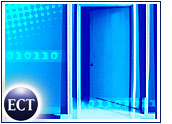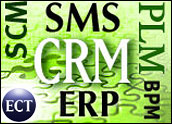
The demand for enterprise portals — software that connects the applications at work inside a company — will be strong for the next five years, according to “Two Technologies, One Direction: How CRM and Enterprise Portals Can Coexist,” a recent report by IDC.
The report details the rapid adoption of enterprise portals such as SAP’s NetWeaver. Despite a slow recovery in the economy and IT spending, enterprise portal software will reach US$1.4 billion in worldwide revenue in 2008, with North America representing the majority of that revenue (56.2 percent). Sixty-seven percent of IDC’s survey respondents said their firms were planning to implement enterprise portal software soon or already had done so.
Early Adopters
Companies adopt the software primarily to gain a platform for new Web-based tools, to aid employees seeking information and to provide content management functions to employees, according to the report. “Enterprise” means deployment across the organization, but senior management, human resources and marketing tend to engage with the portal before other internal functions.
“Specific applications can be built to manage CRM-related processes through the portal, such as managing a marketing campaign or responding to customer complaints,” said Brian McDonough, research manager of enterprise portal software at IDC, explaining why marketing is a natural early adopter.
“The portal can extend access to relevant CRM-related data across the enterprise or it can put selected data or self-service capabilities in the hands of partners, resellers, customers, field sales staff, etc.,” he said.
Portal Governance
Ensuring that the portal has the latest corporate and customer information probably represents the biggest challenge to portal adoption, said Greg Crider, director of product marketing for SAP’s NetWeaver.
The various stakeholders who use the portal will expect regular reports on company and market developments. Unless the portal — kept alive by a CRM system integrated with call-enter information, lead-generation updates and the latest customer satisfaction research — reveals up-to-the minute customer knowledge, it fails.
Portals must host relevant and timely content, he said. They also need to operate on a scalable and easily administered model. This means all of the complexity hides on the back end, so the interface is simple and tailored to specific groups of users.
“A portal allows you to identify relative subsets of large and complex applications and to target them to a user group,” Crider told CRM Buyer. “CRM can be too robust, too complex for new audiences. All of the people in an organization don’t need all of the training you have on CRM.”
An enterprise portal “distills down different sets of features for different deployments” on the same server, giving different views of company content to different users at the same time, he said.
Integration
“The portal allows companies to extend returns on investments in legacy applications and eases development for Web-based composite applications,” IDC’s McDonough said.
The software pulls together applications across the enterprise in what SAP calls an “appastructure.” CRM, supply-chain management and enterprise resource planning systems, for instance, reside on the same platform, eliminating the expense of running the systems independently and the time wasted trying to pass information back and forth to the appropriate people inside (and outside, in the case of clients and suppliers) the organization.
This flexible access to applications increases the speed of innovation inside a company. Marketing, sales and service — the common users of traditional CRM — moves closer to customers, but at the same time senior executives, operations, logistics, research and development and other corporate functions have a direct view into what customers are doing. The bottom line benefits when the entire enterprise is focused on the customer.













































